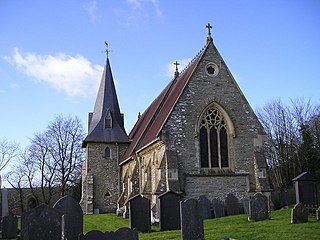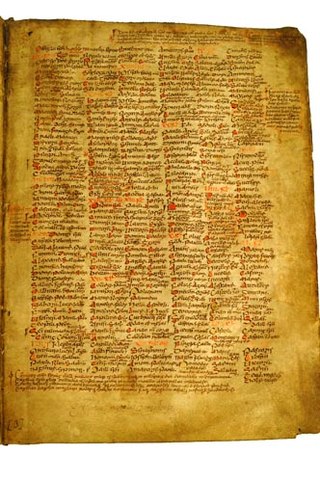Eochaid or Eochaidh is a popular medieval Irish and Scottish Gaelic name deriving from Old Irish ech "horse", borne by a variety of historical and legendary figures.
Zosimus, Zosimos, Zosima or Zosimas may refer to:
Lugaid is a popular medieval Irish name, thought to be derived from the god Lug. It is borne by a number of figures from Irish history and mythology, including:
Ailill is a male name in Old Irish. It is a prominent name in Irish mythology, as for Ailill mac Máta, King of Connacht and husband of Queen Medb, on whom Shakespeare based the Fairy Queen Mab. Ailill was a popular given name in medieval Ireland, meaning something like "beauty".

March 21 - Eastern Orthodox liturgical calendar - March 23

Saint Cynllo is a British saint, who lived in the late 5th and early 6th centuries, generally described as a brother of Saint Teilo. Cynllo was known for "...the sanctity of his life and the austerity of his manners."

July 5 - Eastern Orthodox Church calendar - July 7
Dallan is a given name and surname. Notable people with this name include:
Nechtan, Nectan or Neithon may refer to:

Mél of Ardagh, also written Mel or Moel, was a 5th-century saint in Ireland who was a nephew of Saint Patrick. He was the son of Conis and Patrick's sister, Darerca. Saint Darerca was known as the "mother of saints" because most of her children entered religious life, many were later recognized as saints, and several of her sons became bishops.

Saint Moninne or Modwenna of Killeavy was one of Ireland's early female saints. After instruction in the religious life, she founded a community, initially consisting of eight virgins and a widow with a baby, at Slieve Gullion, in what became County Armagh. They lived an eremitical life, based on that of Elijah and Saint John the Baptist. Moninne died in 517. Her feast day is 6 July.
Saint Felim, an Irish Christian hermit and priest, was born, probably in Kiennacta Breagh, County Meath in the mid sixth century.
Saint Darerca of Ireland was a sister of Saint Patrick.

Budoc of Dol was a 5th-century Breton monk and Bishop of Dol, who has been venerated since his death as a saint in both Brittany and Devon. Budoc is the patron saint of Plourin in Finistère where his relics are preserved. His feast day was originally celebrated on 8 December, the date still used in Devon, but in Brittany this has been transferred to 9 December.
Modestus was a Roman cognomen. It may refer to:

The Martyrology of Tallaght, which is closely related to the Félire Óengusso or Martyrology of Óengus the Culdee, is an eighth- or ninth-century Irish-language martyrology, a list of saints and their feast days assembled by Máel Ruain and/or Óengus the Culdee at Tallaght Monastery, near Dublin. The Martyrology of Tallaght is in prose and contains two sections for each day of the year, one general and one for Irish saints. It also has a prologue and an epilogue.
Nath Í, an early Irish personal name for males, may refer to:
Banban the Wise was an Irish saint installed by St. Patrick as pastor of the Domnach Mór in Templeport, County Cavan, Ireland which was erected after destroying the idol of pre-Christian god Crom Cruach at the nearby plain of Magh Slécht.
Manchán, Mainchín, Manchéne and a variety of other spellings may refer to:
This page is based on this
Wikipedia article Text is available under the
CC BY-SA 4.0 license; additional terms may apply.
Images, videos and audio are available under their respective licenses.





